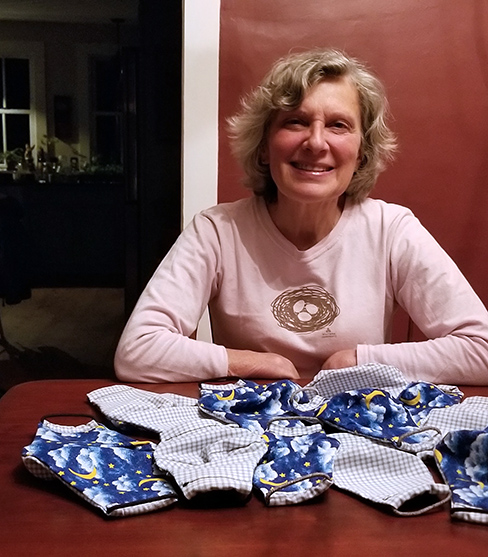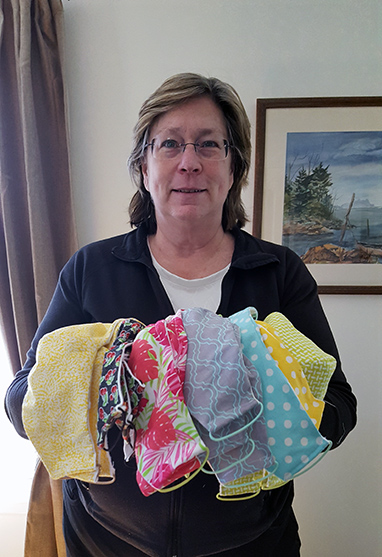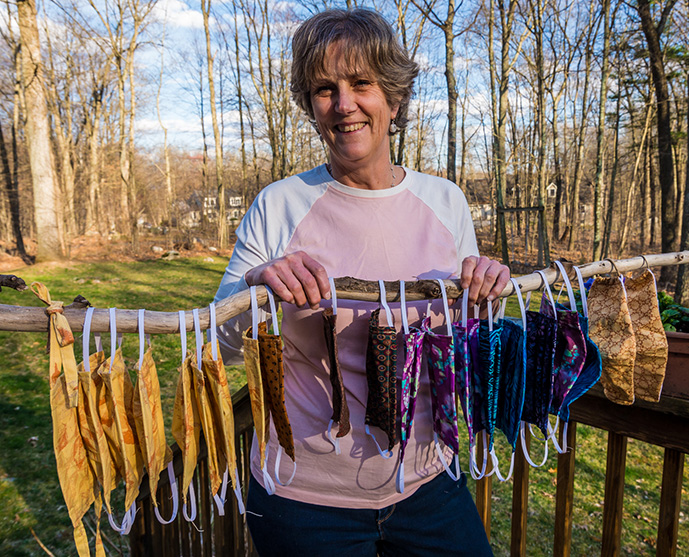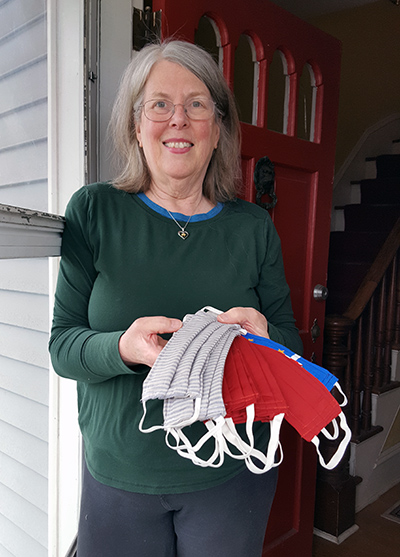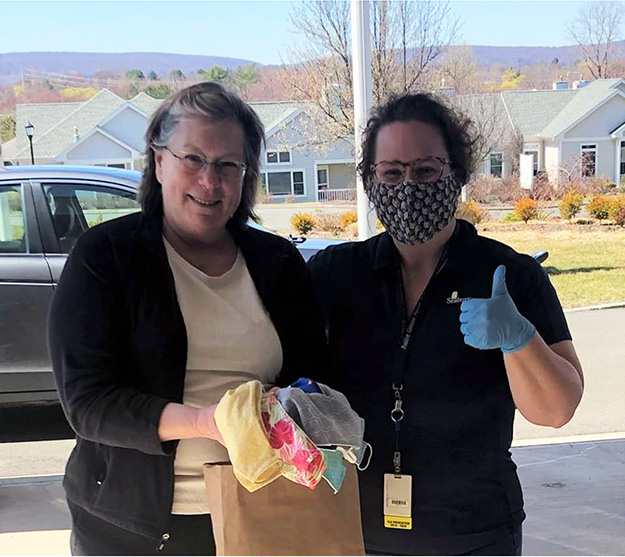- Apply
- Visit
- Request Info
- Give
Eastern Makes, Donates Masks in COVID-19 Relief Effort
Written by Michael Rouleau
Published on April 08, 2020
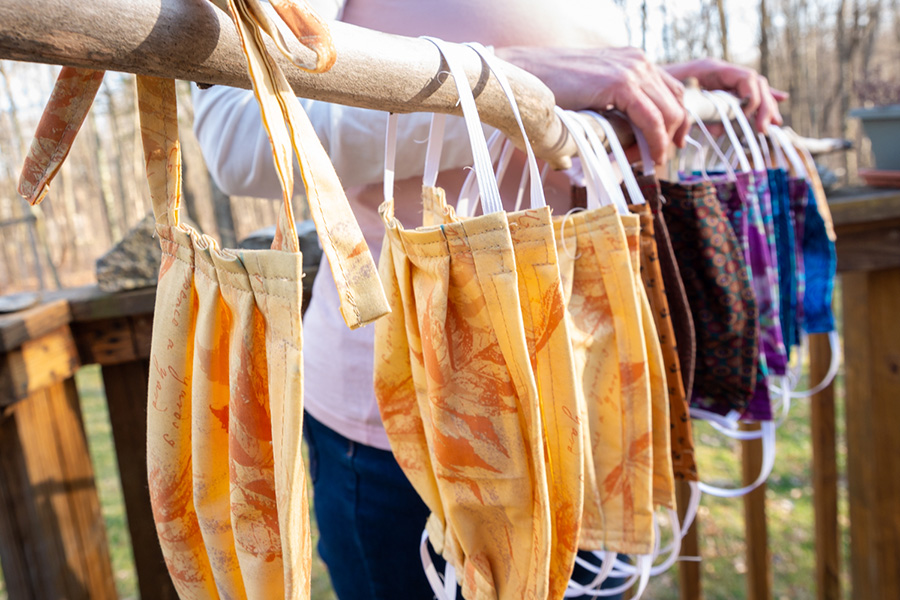
Looking for ways to help during the unprecedented COVID-19 pandemic, a team of volunteer “seamstresses” from Eastern Connecticut State University has collaborated to produce face masks for organizations on the frontlines of the health care emergency. The relief effort is being coordinated by the Center for Community Engagement (CCE), which has a team of 26 volunteers sewing cloth masks during this time of quarantines and social distancing.
Separate from the homemade mask production project, Eastern’s Office of Environmental Health and Safety has donated 1,200 surgical masks to the Windham Emergency Management office, which will be distributed to various agencies across town.
While hospitals and other healthcare providers face shortages of personal protection equipment (PPE), other essential staff such as grocery store clerks and senior living center staff also say they lack sufficient protections, and have been seeking masks to use.
“We all are worried about the drastic increase in coronavirus infections and if you are like me, you wonder what we can do to help,” said Kim Silcox, director of the CCE. “We are encouraging anyone with a sewing machine to help make masks that can be donated to nursing homes, senior living centers and other sites where masks are in very short supply.”
The CCE made its first major delivery of 54 masks this week to the Seabury retirement community in Bloomfield. “We received an incredible act of goodwill and generosity today from Eastern Connecticut State University,” wrote Seabury staff on its Facebook page on April 6. “As our own residents and staff have been creative in making their own homemade masks, this boost from Eastern couldn’t have come at a better time! The first batch of 54 masks arrived today and we couldn’t be more grateful.”
Masks have also been delivered to Ted's IGA in Hebron, Sunset Hill group home in Hampton, Crossroads Physical Therapy in Columbia, the Hospital of Central Connecticut in Southington, St. Joseph Living Center in Windham and Windham Hospital. The CCE’s next major delivery of 80 masks is scheduled for later this week to the No Freeze Hospitality Center in Willimantic.
“I am definitely not an experienced seamstress,” said Trudy Hyatt, Banner management information specialist at Eastern, who tried three different patterns before settling on one that she can make well. “They become easier to make every time I do one and they sew up quickly so you feel like you’re getting something done that may help someone somewhere. I can make about four a night. It keeps me busy with something other than technology. I’ve given some out to friends and relatives and will be delivering some to my local grocery store.”
There are many patterns online for making homemade cloth masks. One type, which the CCE provides the pattern for, is called an Olson mask. Silcox says this design is what sites are asking for, as opposed to flat masks with folds. “Any prewashed cotton fabric will work,” she said. “Many sites recommend an old t-shirt for the inside next to the skin and 100 percent cotton for the outside, including old pillow cases, sheets, etc. It doesn’t have to be pretty!”
“I have appreciated the opportunity to make face masks and honored to be making them for people in my community,” said Mary Oliver, university assistant for the CCE. “Production making is an art in itself and making different designs that people have requested is a technical challenge to which I look forward. Using fabrics I have on hand (quilt scraps, cotton clothing, old sheets and pillow cases) is a creative experience in itself. I’m so glad there are community folks just jumping into this, as the process of making something really useful now is a small way to give back.”
“My oldest daughter is a registered nurse in a Connecticut hospital,” said Nancy Deede, university assistant for the CCE. “I hear her horror stories and realize her need to have cloth masks on hand for her family at home, including three young boys (my grandsons). I sent masks to my other children and grandchildren as well. Helping them has helped me to deal somewhat with being unable to see any of them. I intend to offer masks to my neighbors also.”
Those interested in contributing to the effort should contact Kim Silcox at silcoxk@easternct.edu, who can connect individuals with local organizations in need or coordinate pickups for batch deliveries. For details on two patterns endorsed by the CCE, visit https://www.instructables.com/id/Olson-Mask-for-PPE-With-Filter-for-Personal-and-No/ or https://sarahmaker.com/how-to-sew-a-surgical-face-mask-for-hospitals-free-pattern/.
While wearing masks is being encouraged for the general public during forays from home (grocery stores, pharmacies), it is important to note that such homemade masks are not equivalent to N95 masks or other medically approved personal protection equipment used by health care providers. They offer no guarantee of protection from the COVID-19 virus and should not be presumed to replace approved equipment being used in hospitals and other facilities.



